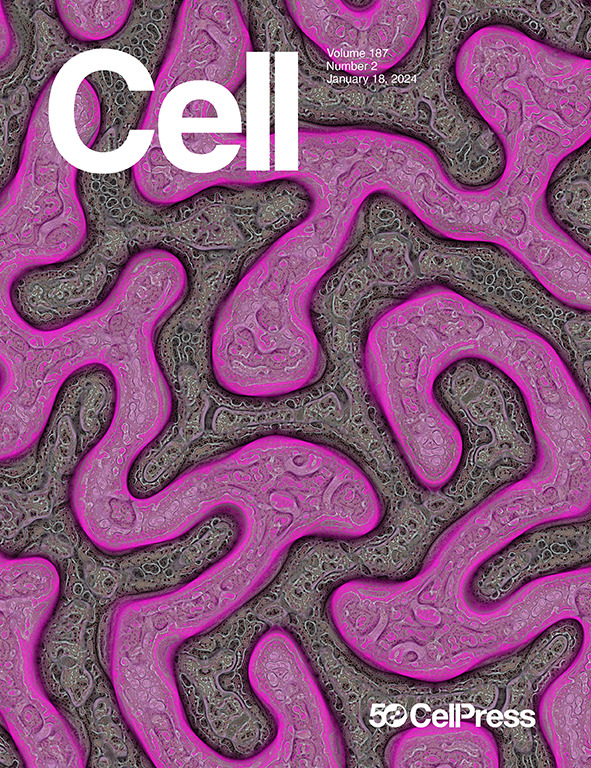Intra-condensate demixing of TDP-43 inside stress granules generates pathological aggregates
IF 45.5
1区 生物学
Q1 BIOCHEMISTRY & MOLECULAR BIOLOGY
引用次数: 0
Abstract
Cytosolic aggregation of the nuclear protein TAR DNA-binding protein 43 (TDP-43) is associated with many neurodegenerative diseases, but the triggers for TDP-43 aggregation are still debated. Here, we demonstrate that TDP-43 aggregation requires a double event. One is up-concentration in stress granules beyond a threshold, and the other is oxidative stress. These two events collectively induce intra-condensate demixing, giving rise to a dynamic TDP-43-enriched phase within stress granules, which subsequently transition into pathological aggregates. Intra-condensate demixing of TDP-43 is observed in iPS-motor neurons, a disease mouse model, and patient samples. Mechanistically, intra-condensate demixing is triggered by local unfolding of the RRM1 domain for intermolecular disulfide bond formation and by increased hydrophobic patch interactions in the C-terminal domain. By engineering TDP-43 variants resistant to intra-condensate demixing, we successfully eliminate pathological TDP-43 aggregates in cells. We suggest that up-concentration inside condensates followed by intra-condensate demixing could be a general pathway for protein aggregation.

应力颗粒内的TDP-43在凝结水内脱混产生病理性聚集体
核蛋白TAR dna结合蛋白43 (TDP-43)的胞质聚集与许多神经退行性疾病有关,但TDP-43聚集的触发因素仍存在争议。在这里,我们证明TDP-43聚合需要双重事件。一种是应激颗粒中浓度超过阈值,另一种是氧化应激。这两个事件共同诱导冷凝水内的脱混,在应力颗粒内产生动态的tdp -43富集阶段,随后转变为病理聚集体。在ips -运动神经元、疾病小鼠模型和患者样本中观察到TDP-43的冷凝水内脱混。从机制上讲,RRM1结构域的局部展开导致分子间二硫键形成,c端结构域疏水斑块相互作用增加,从而触发冷凝物内部的脱混。通过对TDP-43变体进行工程改造,使其抵抗冷凝物脱混,我们成功地消除了细胞中病理的TDP-43聚集体。我们认为凝析液内部的浓聚和凝析液内部的脱混可能是蛋白质聚集的一般途径。
本文章由计算机程序翻译,如有差异,请以英文原文为准。
求助全文
约1分钟内获得全文
求助全文
来源期刊

Cell
生物-生化与分子生物学
CiteScore
110.00
自引率
0.80%
发文量
396
审稿时长
2 months
期刊介绍:
Cells is an international, peer-reviewed, open access journal that focuses on cell biology, molecular biology, and biophysics. It is affiliated with several societies, including the Spanish Society for Biochemistry and Molecular Biology (SEBBM), Nordic Autophagy Society (NAS), Spanish Society of Hematology and Hemotherapy (SEHH), and Society for Regenerative Medicine (Russian Federation) (RPO).
The journal publishes research findings of significant importance in various areas of experimental biology, such as cell biology, molecular biology, neuroscience, immunology, virology, microbiology, cancer, human genetics, systems biology, signaling, and disease mechanisms and therapeutics. The primary criterion for considering papers is whether the results contribute to significant conceptual advances or raise thought-provoking questions and hypotheses related to interesting and important biological inquiries.
In addition to primary research articles presented in four formats, Cells also features review and opinion articles in its "leading edge" section, discussing recent research advancements and topics of interest to its wide readership.
 求助内容:
求助内容: 应助结果提醒方式:
应助结果提醒方式:


